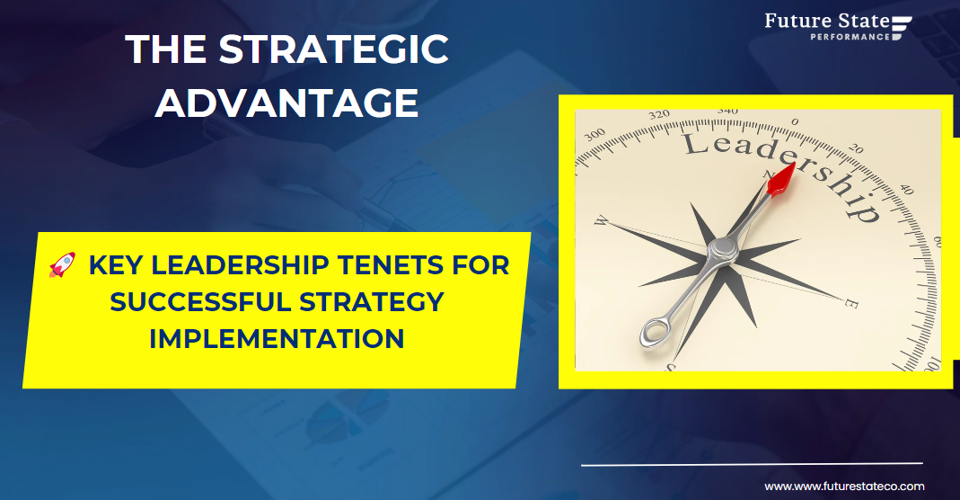Strategy
Key Leadership Tenets for Successful Strategy Implementation
By Shay Lynch
December 31, 2024
Key Highlights
-
Strategy demands leadership:
-
Implementation requires the leadership team to align, adapt, and drive change collaboratively.
-
-
Communication is key:
-
Transparent updates keep teams informed and engaged.
-
Active listening fosters collaboration and addresses concerns early.
-
Two-way communication ensures bottom-up insights are valued.
-
-
Empowerment builds ownership:
-
Delegating with trust encourages autonomy and innovation.
-
Involving teams in planning fosters buy-in and commitment.
-
-
Commitment drives momentum:
-
Leading by example aligns actions with strategic goals.
-
Consistency at all levels fuels progress and morale.
-
-
Culture must align with strategy:
-
Adapt organisational culture to support strategic goals.
-
Proactively evolve culture to strengthen, not resist, execution.
-
-
Honesty nurtures trust:
-
Transparent leadership builds credibility and accountability.
-
Realistic assessments ensure achievable, stretch goals.
-
-
Adaptability is vital:
-
Regularly assess progress and refine the strategy as needed.
-
Embrace change as part of the process.
-
-
Inspire confidence: Leaders who believe in their teams ignite purpose and motivation.
Leadership isn’t about holding the wheel alone—it’s about steering the entire crew in the same direction, with clarity, trust, and purpose.
Introduction
Embarking on a strategic journey demands more than a well-crafted plan—it requires exceptional leadership. A strategy challenges a business to evolve, and this evolution starts with its leadership team. Strategy implementation calls for everyone at the leadership table to adapt, align, and drive change together.
Having worked with businesses of varying scales and sectors, I’ve identified foundational leadership tenets that significantly increase the odds of strategic success. These principles apply not just to the CEO but to the entire leadership team—each member must embody them to build organisational congruence and momentum.
1. Communication: The Lifeblood of Strategy
-
Open Channels: Transparent communication is the foundation of trust. Share regular updates on the strategy, progress, and any necessary adjustments.
-
Involve and Listen: Two-way communication is critical. Get the team engaged in conversations and actively listen—not just to respond but to understand. This includes bottom-up insights that can highlight hidden challenges or opportunities.
-
Active Listening: Do you actually listen? Encouraging candid dialogue creates a collaborative environment where ideas flourish, and concerns are addressed early. It’s one of the most powerful tenants that can be embodied. When people feel listened to, they are made feel special.
2. Empowerment: Building Ownership
-
Delegate with Trust: Empower your teams by giving them autonomy and responsibility. Provide the tools and support they need to succeed but avoid micromanaging.
-
Involve Them in Planning: Ownership starts with involvement. Teams that contribute to the strategy’s design feel invested and are far more committed to its success.
-
Nurture Innovation: Empowered teams are more likely to innovate, find solutions, and overcome obstacles with confidence.
3. Commitment: Walking the Talk
-
Lead by Example: Leadership is about action. Align your behaviour with the strategic goals to demonstrate unwavering commitment.
-
Measurable Progress: Ensure that day-to-day actions can be tracked against the strategy’s objectives. Consistent leadership commitment fuels team motivation and keeps momentum alive.
4. Organisational Culture: The Glue That Holds Strategy Together
-
Cultural Alignment: A strategy must align with the organisation’s culture, while the culture must also adapt to support the strategy. This symbiosis creates a resilient and adaptable organisation.
-
Evolve With Purpose: Be proactive in shifting the culture as the strategy unfolds, ensuring that it strengthens, not resists, strategic execution.
5. Absolute Honesty: Build Credibility
-
Transparent Leadership: Honesty about challenges, setbacks, and wins builds trust. A transparent approach fosters accountability and helps teams navigate uncertainty with clarity.
-
Realistic Assessment: Be candid about the organisation’s current capabilities. Stretch goals are great, but the strategy must be achievable with realistic, incremental steps.
6. Purposeful Vision: The North Star
-
Clarify the Vision: A clear, purposeful vision unites teams and provides a rallying cry. It’s not just a statement—it’s a mission everyone believes in.
-
Values Alignment: Ground the vision in the company’s core values, reviewing and evolving them as needed. The first step in any strategic plan is to reaffirm or refine your purpose, values, and mission.
7. Course Correction: The Power of Adaptability
-
Continuous Assessment: Regularly review the strategy’s progress and effectiveness. Is it still aligned with the evolving business landscape?
-
Iterate and Improve: A strategy isn’t set in stone. Adapt as you go—whether tweaking tactics, pivoting based on market dynamics, or discarding what’s not working.
-
Plan for Flexibility: Build adaptability into the strategy. Expect change, and make it part of the process rather than a disruption.
8. Inspire Confidence: A Leadership Imperative
-
Nurture Belief: Leaders who show confidence in the team’s ability to execute inspire a sense of purpose and drive. A motivated team with strong morale is a cornerstone of successful strategy implementation.
In Conclusion
Effective leadership is the linchpin for successful strategy implementation. By championing communication, empowering teams, committing to alignment, nurture cultural evolution, embracing honesty, refining the vision, enabling adaptability, and inspiring confidence, leaders can navigate their organisations toward success.
Leadership isn’t about holding the wheel alone—it’s about steering the entire crew in the same direction, with clarity, trust, and purpose. 🌟



